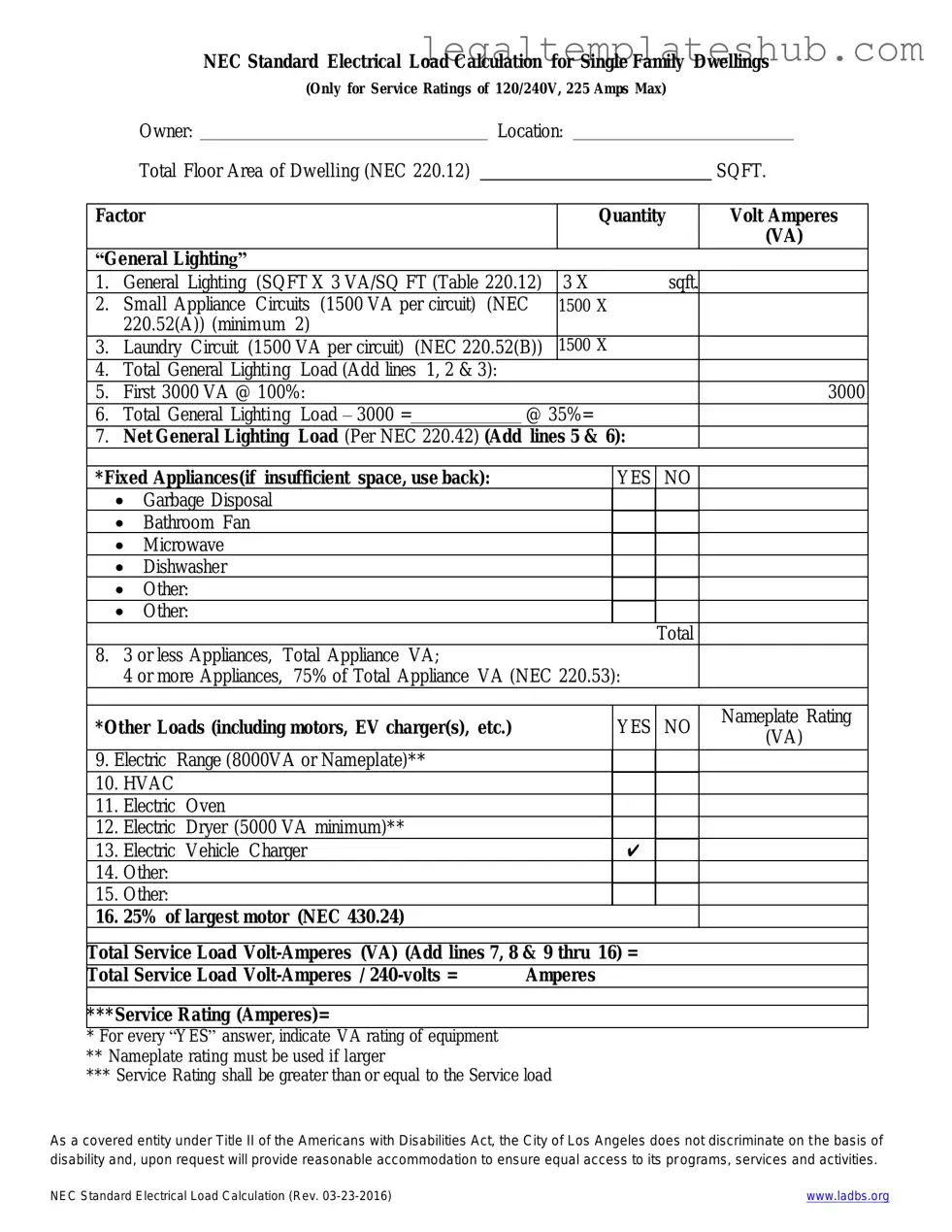Blank LADBS NEC Standard Electrical Load Calculation PDF Form
The LADBS NEC Standard Electrical Load Calculation form is a crucial tool for determining the electrical load requirements for various projects in Los Angeles. This form ensures compliance with the National Electrical Code (NEC) and helps streamline the permitting process. To get started, fill out the form by clicking the button below.
Access Editor
